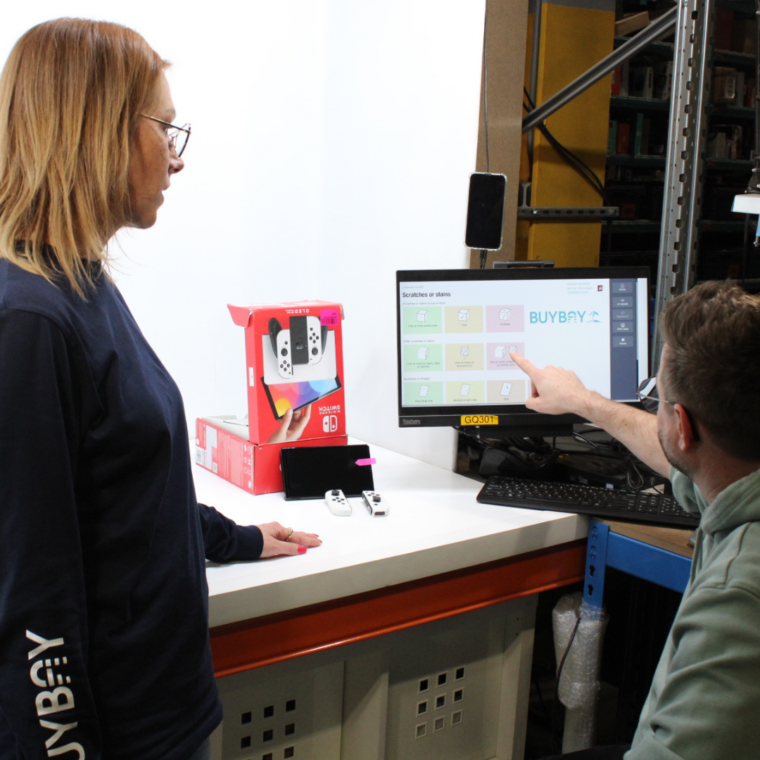
Germany still holds the record for the highest returns rate in Europe. Accordingly, returns continue to be one of the biggest “profit swallowers” in e-commerce. This is also confirmed by studies by associations such as the EHI. It is absolutely in the interest of consumers as well as both manufacturers and retailers to reduce the number of returns. For consumers, the idea of sustainability is playing an increasingly important role – but so are the costs. After years of free returns, these could be passed on to customers again to a greater extent in 2023. Also for companies, motivation is coming from several sides. Cost pressure in terms of internal and external processes is increasing. In addition, there are reputational issues related to handling returns, as well as obligations for sustainability accounting and ESG reporting. In this article, we have taken a closer look at why returns processes will play an important role in the business strategy of e-commerce companies in 2023 and what new paths suppliers could take.
Cost factors put to the test
The unchecked growth in online retailing is over. According to bevh, total e-commerce sales from the beginning of July to the end of September 2022 fell by a further 8.8 percent year-on-year. This is still 24.5 percent higher than the same period in 2019 (before the pandemic) but in combination with the current inflation, manufacturers and retailers are clearly feeling the business slump and are taking a close look at all internal and external cost factors. Many companies are keen to look at all possible cost savings before they have to think about laying off staff hired during the boom years.
Free returns are therefore being discussed by many companies as a starting point. After all, Germany not only has the highest returns rate, but at 88.7 percent of online retailers, these are also free of charge. In the rest of the EU, only 52.4 percent of retailers offer free returns. In addition to costs for returns, some providers also offer their customers alternatives, such as “snail’s pace” deliveries, which gained very positive feedback.
New ways to prevent returns
Whether for cost reasons or for the sake of sustainability, a strategy that avoids returns has a positive impact on the bottom line. A detailed and realistic product description is particularly important. After all, misleading, incorrect, or deceptive information is one of the main reasons for returning goods.
New technical tools, such as augmented reality, are already helping customers to better assess products in online retail. Prospective customers can, for example, view new televisions digitally in the room and thus better assess whether the design and size of the device will fit in the desired location in their own living room. Other technologies even promise to help customers try on clothes or test the fit of shoes with the help of avatars.
Another measurement that is especially offered in the case of long delivery distances, is to offer shoppers a discount if they keep the goods they initially wanted to return.
In-house or external? Closely examine your return processes
For many companies, it is important to better understand their customers with the help of the data collected during purchases and returns. In this way, customers can not only be addressed more individually with offers, but it also helps to better understand customer preferences. Besides costs, this information is a big motivator for suppliers to examine again more closely whether they can cover their returns processes in-house.
In addition to that, especially brand manufacturers want to ensure that the quality of B-goods meets their requirements. In terms of sustainability, the logistics effort could also be reduced. Additional transport routes between the customer, retailer, logistics partner, and manufacturer, in particular of larger items (such as household appliances or furniture can be reduced. This in turn saves both costs and emissions and has a positive impact on the sustainability balance sheet (ESG), which customers also appreciate.
However, mapping all returns processes internally is a challenge for many providers. This is because they involve many steps, from the digitization of returns labels (including the processes for data capture using machine learning and predictive insights) to the evaluation and resale of returns. It is therefore worthwhile for every company to carefully examine whether developing its own tools, using a software solution at its own warehouse location or a partnership is best suited for their return process.
New returns ecosystems on the horizon
Transport distances could be reduced even further if items could be forwarded directly from customer to customer instead of being returned to the retailer or manufacturer. If the item doesn’t fit the first buyer or he/she doesn’t like it, he or she could send it directly to the next interested party. The first best practices of this are already available. However, the professional implementation of such processes is based on intelligent support for these processes. Ideally, customer 1 should be able to use standardized criteria and photos to describe the product’s condition before it goes on sale again. This way, new prospects know whether the product is new and customer 1 only made a mistake with the color, or whether they can buy a high-quality product with a damaged package or a small scratch with a certain discount. Digitized labeling as well as supporting services, could help ensure that all parties have a positive shopping experience.
Summary
Careful and intelligent use of goods and resources is becoming increasingly important criteria for the success in e-commerce. It is exciting to see which new paths manufacturers and retailers will take in the coming years. The further development of intelligent software tools and digitally supported processes is opening the doors to new workflows and process chains. Among consumers, interest in sustainable business practices continues to grow. Buying returned goods is not only good for the environment, but also an increasingly popular way to buy products cheaper than straight from the factory.


